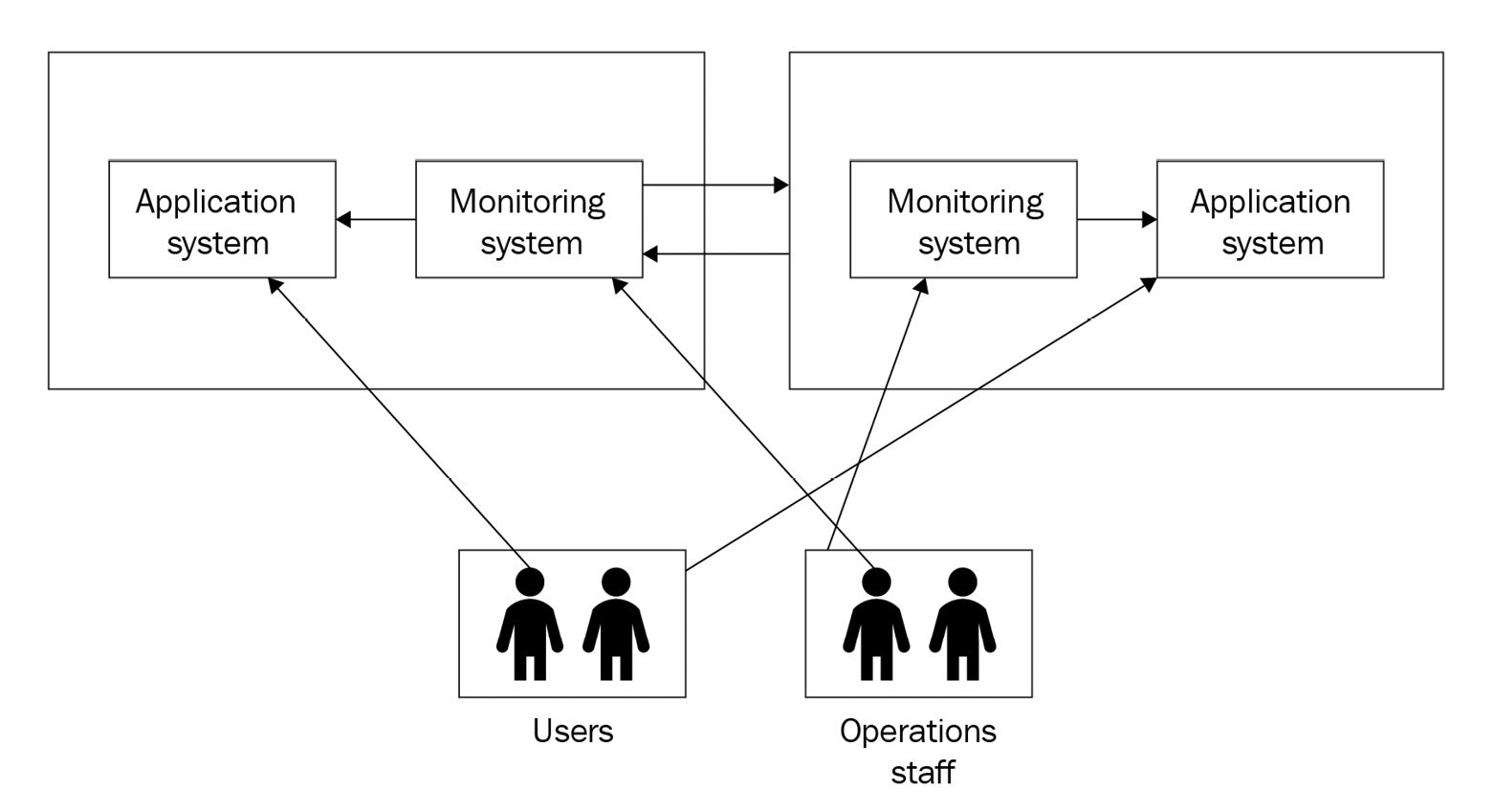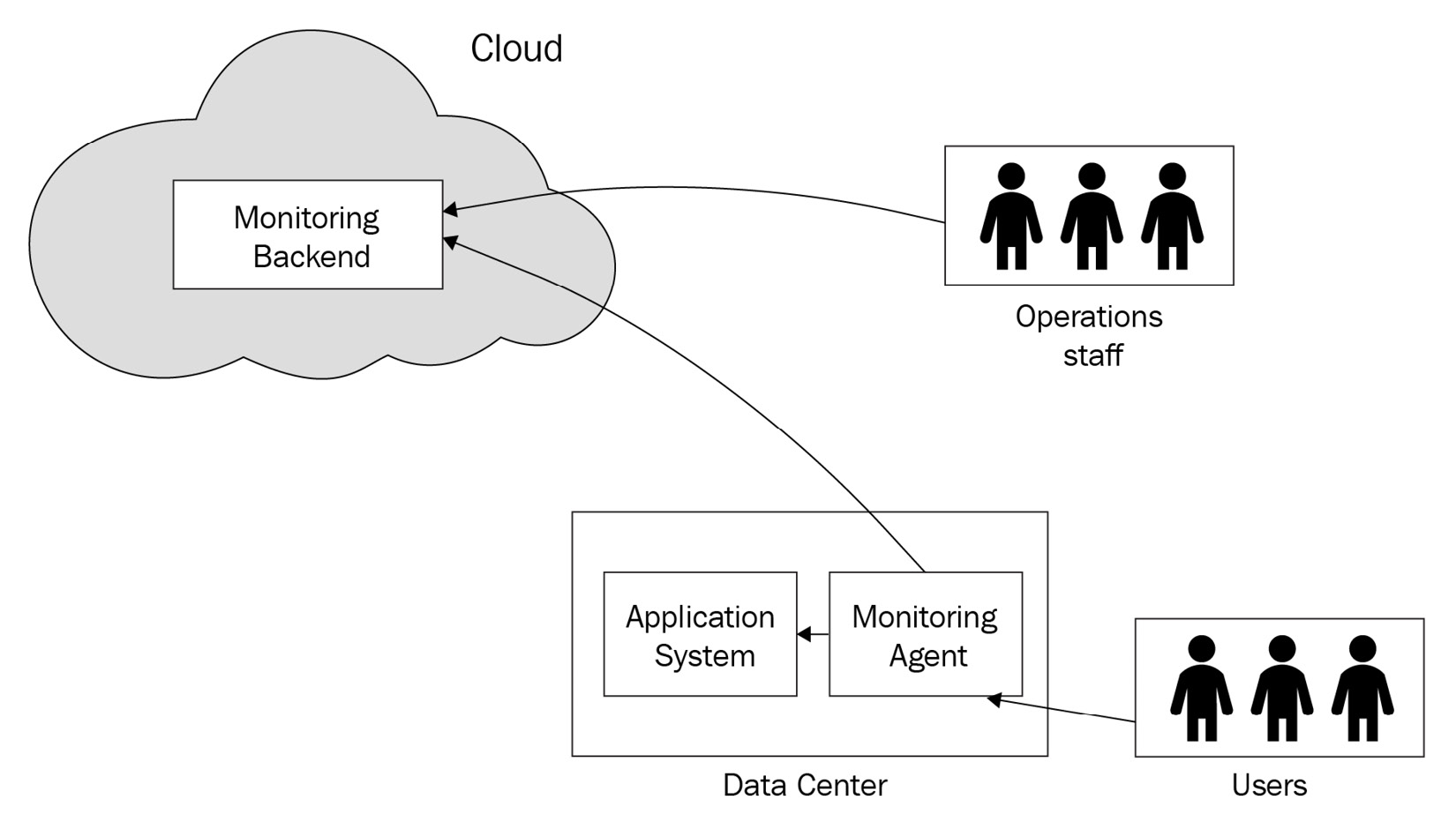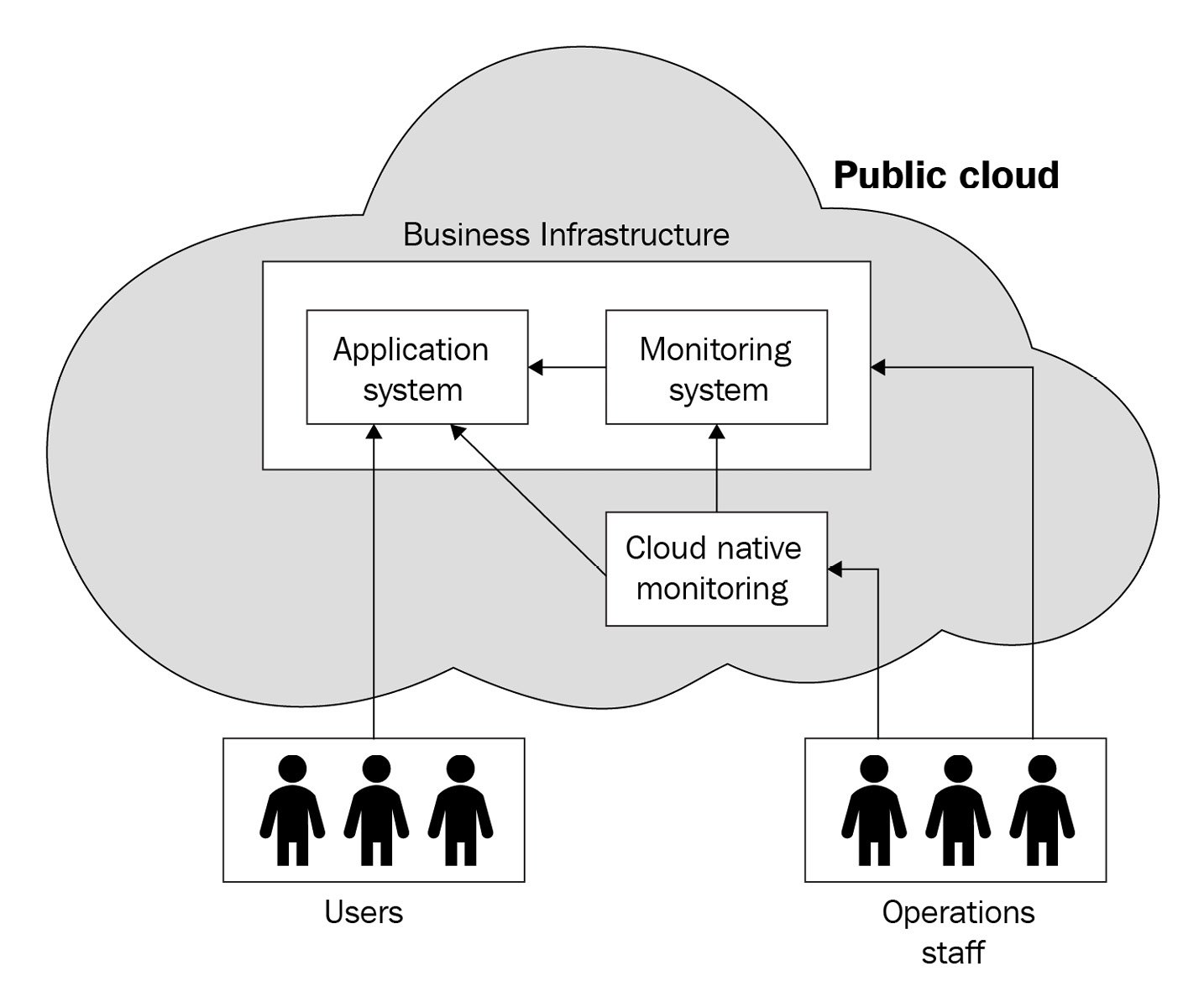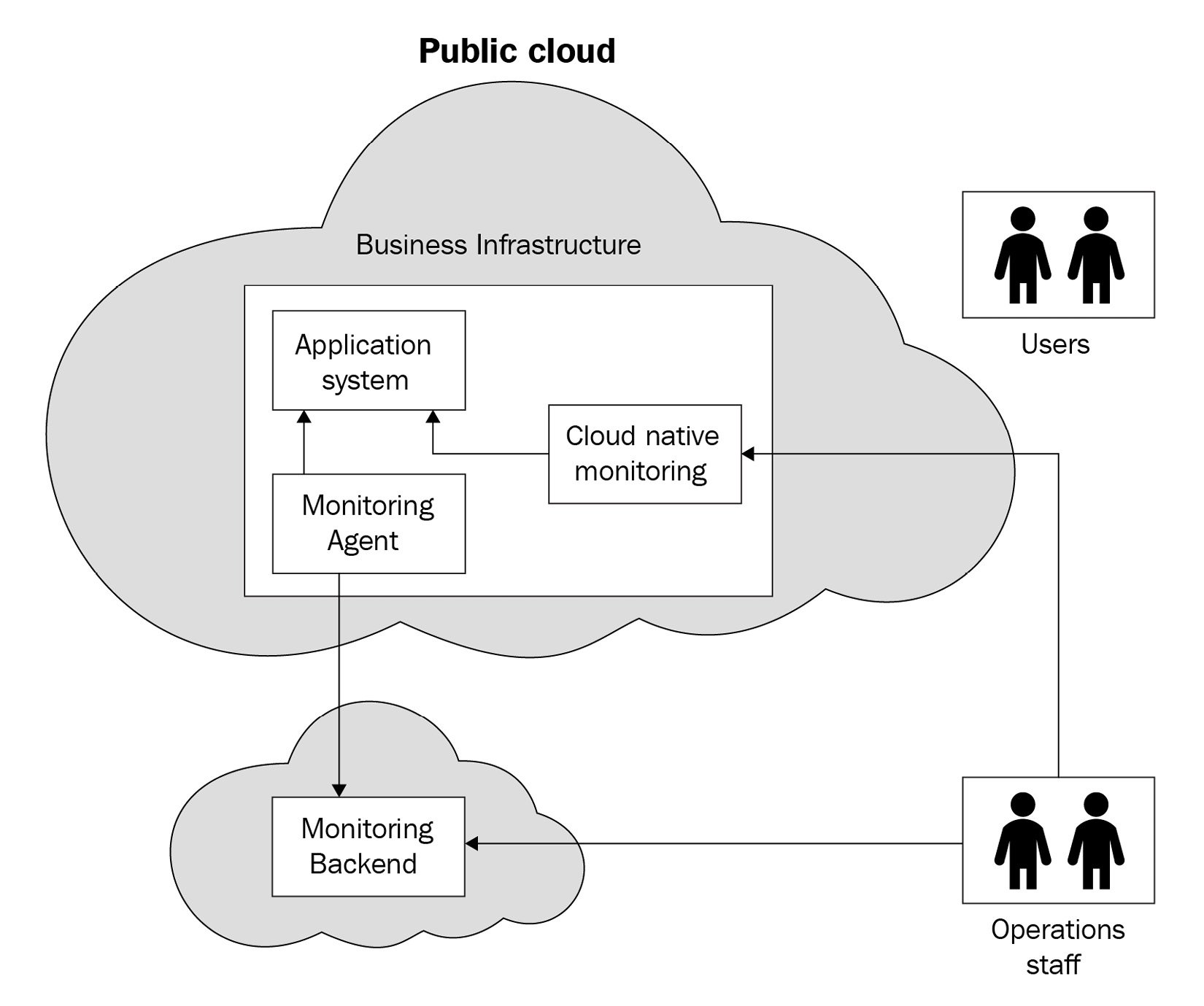Monitoring applications are installed and configured based on where the applications to be monitored are run. Here, we will look at a few use cases of how monitoring is rolled out in different scenarios to understand the typical configurations.
All in a data center
This is a classic scenario of monitoring in which both the infrastructure that hosts the applications and the monitoring tools are in one or more data centers. The data centers could be privately owned by the business or a hosting facility that is rented out from a data center provider. The latter option is usually called co-location.
This figure illustrates how both the software application and monitoring tool are running from the same data center.
Figure 1.1 – Single data center
The following figure illustrates how the software application and monitoring tool are running from two data centers, which ensures the availability of the software system:
Figure 1.2 – All in a data center with multiple data centers
If the application is hosted from multiple data centers, and if one of them becomes inaccessible, it would be possible for the monitoring system to alert on that. If only one data center is in use, then that will not be viable as the entire monitoring system would also become inaccessible along with the software system it monitors.
Application in a data center with cloud monitoring
This is an emerging scenario where businesses have their infrastructure hosted in data centers and a cloud monitoring service such as Datadog is used for monitoring. In this scenario, the monitoring backend is in the cloud and its agents run in the data centers alongside the application system.
Figure 1.3 – Application in a data center with cloud monitoring
There is no need to monitor the monitoring system itself as the SaaS providers provide its status.
All in the cloud
There could be two different cases in an all-in-the-cloud scenario of monitoring. In both cases, the infrastructure that runs the software system will be in the cloud, typically on a public cloud platform such as AWS. The entire monitoring system can be deployed on the same infrastructure or a cloud monitoring service such as Datadog can be used, in which case, only its agent will be running alongside the application system.
Figure 1.4 – All in the cloud with in-house monitoring
In the first case of an all-in-the-cloud scenario, you need to set up monitoring or leverage monitoring services provided by a public cloud provider such as CloudWatch on AWS or use a combination of both.
Figure 1.5 – All in the cloud with cloud monitoring
In the second case of an all-in-the-cloud scenario, a third-party SaaS monitoring service such as Datadog is used. The main attractions of using SaaS monitoring services are their rich set of features, the high availability of such services, and the minimal overhead of rolling out and maintaining monitoring.
Using cloud infrastructure has the added advantage of having access to native monitoring tools such as CloudWatch on AWS. These services are highly reliable and can be used to enhance monitoring in multiple ways to do the following:
- Monitor cloud resources that are hard to monitor using standard monitoring tools
- Be used as a secondary monitoring system, mainly to cover infrastructure monitoring
- Monitor the rest of the monitoring infrastructure as a meta-monitoring tool
The scenarios we discussed here were simplified to explain the core concepts. In real life, a monitoring solution is rolled out with multiple tools and some of them might be deployed in-house and others might be cloud-based. When such complex configurations are involved, not losing track of the main objectives of proactive monitoring is the key to having a reliable monitoring system that can help to minimize outages and provide operational insights that will contribute to fine-tuning the application system.



 Free Chapter
Free Chapter






